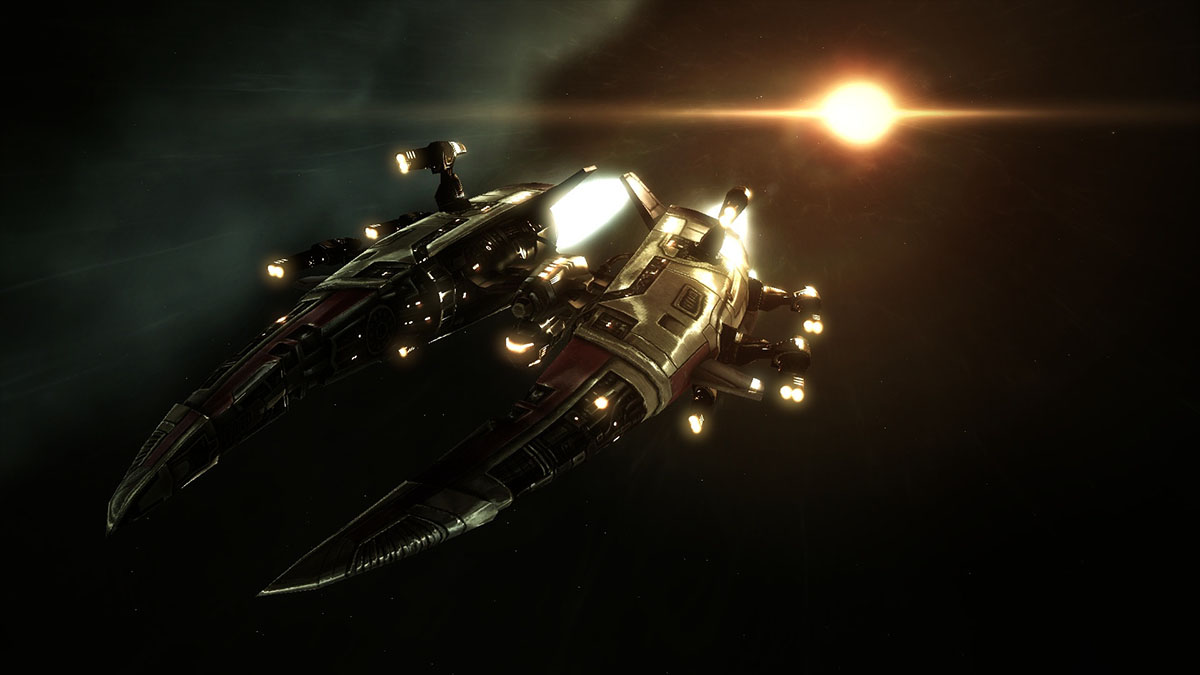do warp drives emit tachyon shockwaves?

Speaking of space-based weapons, here’s an interesting one for you. Once upon a time, when writing about warp drive physics, I asked whether the creation of a warp bubble by a superluminal ship could have some very nasty effects on any nearby planets due to the energy involved, and had my fears validated by a paper on the potential energy output of a warp drive. Now, a small group of theoretical physicists took a look at an interesting related problem, the violent interactions of the warp bubble with the fabric of time and space. A few years ago, we looked at how such bubbles can create showers of radioactive particles inside them to see whether a ship could survive being in said warp bubble and whether the bubble could be stabilized. But what about the space outside the bubbles?
Space may be famous for its vast voids between stars and planets but it’s not entirely empty since streams of particles constantly travel through it. So as you’re blasting along with a superluminal spacecraft possibly feeding off the energy the bubble generates internally, what happens to the countless particles picked up by the gravitational distortion? When the ship stops, the particles still have a lot of inertia and become unstable high energy tachyons easily capable of annihilating anything in their path.
Sounds like a rather straightforward application of Newtonian physics with some relativity for context, but let’s keep in mind that the physics in question are anything but straightforward and the entire idea relies on a warp bubble behaving like an object moving at superluminal speeds. But that’s not really how warp bubbles should behave since they’re wrapping a physical object in a closed pocked of space-time, not creating a shield which lets the physical object inside accelerate past the speed of light. To visualize the difference, imagine driving a car on a long stretch of highway through a swarm of insects. The faster you go, the more bugs will smack into your windshield and with greater force.
As conceptual insects, they don’t actually squish and stick to the glass because they have no internal organs, but stay on because you’re moving a lot faster than they could. If you’re suddenly stopped, these imaginary bugs will fly forwards with the same speed your car was going as classic Newtonian physics dictate, and smash into something else. But now, imagine your car traveling in its own air pocket and these imaginary insects are carried by wind around your vehicle, never even knowing that its there. The former scenario is how the paper treats active warp drives, and the latter is how they should work.
Certainly, an accelerating warp bubble screeching to a sudden stop, swiftly followed by a lethal aurora of very unstable particles with were just accelerated beyond the speed of light and now need to regain some sort of equilibrium irradiating entire planets into oblivion sounds like an awesome sci-fi weapon. However, wouldn’t accelerating particles surfing on a space-time tsunami violate some law of physics? The authors allude to an unlikely result as a giveaway that something seems to be off when they say that the accelerated particles will not have a limit to how fast they could move or how much energy they give off. Would that not violate the widely accepted mass-energy equivalence principle codified in Einstein’s famous equation?
Obviously, the math is very complex and far be it from me to double-check it (comp sci math is very different from physics math), but random particles being able to drifting through the bubble throughout the journey sounds really off because it implies that the bubbles generated by warp drives are permeable. And if these bubbles really are permeable, they should then be subject to a set of physical phenomena that would render superluminal travel impossible for any object with mass. As spacecraft in the bubble try to accelerate to relativistic speeds, they will be pelted into oblivion by the incoming dust and cosmic rays, while being vaporized by the thermal energy generated by the bubble itself, something the warp bubble should prevent if it’s supposed to carry a craft through space.
On the other hand, however, one wonders exactly what happens when a superluminal craft casts off the warp bubble when it arrives at its destination. How big of a gravity wave would it generate? Would be detectable by someone on the planet near which it emerged? Could such waves propagate widely enough through a stellar neighborhood to be used as a SETI detection method? Considering that the energy required to create warp bubbles would be on par with vaporizing Saturn for a decent sized interstellar ship, one could conceive of at least a faint echo from a nearby solar system being detectable by sensitive enough instruments.
But a caveat to trying to figure all this out using theoretical physical constructs we have for superluminal propulsion is that we don’t really know if a warp drive would work the way we envision and protracted investments in figuring out how it would affect space around it could well turn into the search for a proper adjective to describe the colors of the emperor’s new silk cape. It may be a somewhat safer bet to see what it would take to keep a ship using something like a black hole engine safe from bombardment by particles and radiation, or running into rogue, or previously unknown planets as it careens through space and see how much energy would be generated in the process. That way, we’ll have a good idea for what needs to be achieved to build relativistic rockets, and a clue as to what high energy events nearby we might want to investigate for signs of alien intelligence.
See: McMonigal, B., et al (2012). The Alcubierre Warp Drive: On the Matter of Matter Phys. Rev. D arXiv: 1202…





